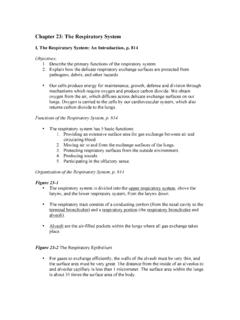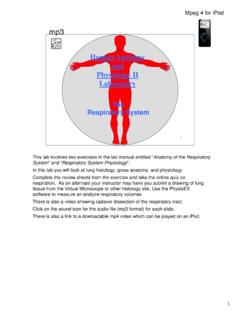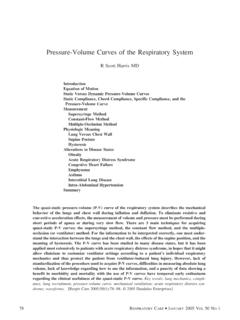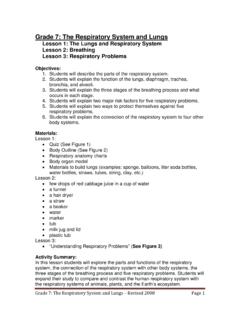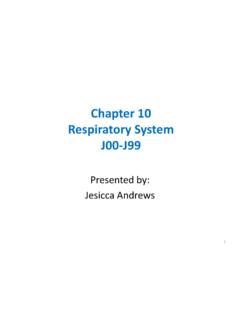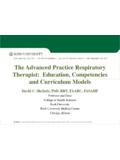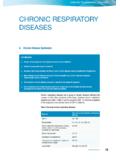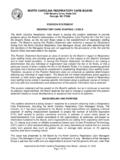Transcription of for Respiratory Therapists, - irccouncil.org
1 For Respiratory Therapists, 3rd EditionA Guide to Aerosol Delivery DevicesProduced by theAmerican Associationfor Respiratory CareSupported by an educational grant fromPhilips Respironics Douglas S. Gardenhire, EdD, RRT-NPS, FAARCArzu Ari PhD, PT, RRT, CPFT, FAARCDean Hess, PhD, RRT, FAARCT imothy R. Myers, MBA, RRT-NPS, FAARCWith a Foreword by Timothy R. Myers, MBA, RRT-NPS, FAARC,Associate Executive Director American Association for Respiratory CareDISCLOSURED ouglas S. Gardenhire, EdD, RRT-NPS, FAARC has served as a consultant for the following companies:Westmed, Inc.
2 And Boehringer 2013 by the American Association for Respiratory CareFOREWORD 2013 A Guide to Aerosol Delivery Devices for Respiratory Therapists, 3rd EditionAmerican Association for Respiratory Care iAerosol therapy is considered to be one of the cornerstones of Respiratory therapy that exemplifies thenuances of both the art and science of 21stcentury medicine. As Respiratory therapists are the only health careproviders who receive extensive formal education and who are tested for competency in aerosol therapy, theability to serve patients with acute chronic Respiratory disease as the experts in aerosol therapy allows the con-cept of art and science to take on a practical therapists continue to be the experts when it comes to the art and science of aerosol the rapidly changing field of aerosol medications and delivery systems.
3 It is imperative that we not onlyshare this expertise with patients but also other members of the health care delivery team across the continu-um of care. With a renewed focus on wellness and prevention within the health care system and a deter-mined focus to minimize cost and waste, the choice of appropriate Respiratory medications and deliverydevices makes selection of both the drug and optimum delivery device even more does a therapeutic intervention around for centuries still combine the art with science in the contextof aerosol therapy?
4 The science component includes many different aspects such as pharmacology, cardiopul-monary anatomy and physiology, physics, and a thorough understanding of the different aerosol delivery tech-nologies on the market today. In order to claim expertise in the science of aerosol therapy and optimize it forpatients, the Respiratory therapist must have concrete knowledge and understanding of the numerous drug for-mulations, their mode of action, and an understanding of the Respiratory conditions where the drug and deliv-ery is recommended and supported by the scientific evidence.
5 While the art of aerosol delivery is much more abstract than the science, it is as equally important to theappropriate delivery of Respiratory medications for optimal outcomes. For aerosol therapy, the interactionbetween technology and human interaction is where art comes into play. There is ample scientific evidenceof sub-optimal or ineffective use of aerosols when self-administered in large part due to lack of knowledgeabout proper technique by patients. All too often, patients do not receive optimum (or sometimes any) benefitfrom their prescribed metered-dose inhalers, dry-powder inhalers, and nebulizers simply because they are notadequately trained or evaluated on their proper combination of the right medication and the most optimal delivery device with the patient s cognitiveand physical abilities is the critical juncture where science intersects with art.
6 For aerosol therapy to be effec-tive, the appropriate delivery system for the medication must be matched to the patient s ability to use it cor-rectly. The art of aerosol therapy does indeed arise from the science. When these two different, but synergisticcomponents of medicine do not properly align, patient adherence decreases. Medication is wasted. Minimalpatient benefit is derived. Because aerosol therapy is integral to our scope of practice and because we are considered the experts inthis area, we have a professional obligation to our patients to continue our learning and competencies in thedelivery of aerosolized medicines.
7 Respiratory therapists must take advantage of this opportunity to reinforcetheir value by updating their knowledge of aerosol delivery systems and combining that knowledge witheffective assessment of patients requiring this therapy. Recommending an appropriate delivery system tailoredspecifically to the patient s abilities is part of that guide will provide you the opportunity to advance your knowledge and expertise in aerosol of both the art and science of aerosol delivery can have a profound impact on appropriately matchingmedications and delivery devices to optimize your patients clinical outcomes.
8 You will also contribute to morecost-effective use of health care system third edition of this Aerosol Guide delivers detailed and comprehensive information that, when com-bined with your dedication and commitment to be the professional experts in this important area, willempower you to provide guidance to your physician, nurse, and pharmacist colleagues but, most important-ly, to your R. Myers MBA, RRT-NPS, FAARCA ssociate Executive DirectorAmerican Association for Respiratory CareAs part of your membership benefits in the American Association for Respiratory Care (AARC),the Association: provides you with continuing education opportunities; keeps track of all the CRCE hours you earn from CRCE-approved programs; and allows you to print online a transcript of your CRCE services are available to you 24 hours a day, seven days a week, on the AARC web site( ).
9 The contents of this book are approved for six CRCE contact hours; and as an AARC member,there is no charge to you. To earn those CRCE contact hours, please go to the AARC web site at: instructions will be given on that web site, including: how to register to take an examination to assess your mastery of course objectives; how to update your e-mail address so that registration confirmation can be sent to ObjectivesAs you read this book, you will be able to:1. Identify the terminology used in aerosol State approximate amount of aerosol deposited in the lower Respiratory tract for nebulizers,pressurized metered-dose inhalers (pMDIs), and dry-powder inhalers (DPIs).
10 3. List advantages and disadvantages of inhalation compared to other routes of drug Identify hazards of aerosol therapy that can impact the patient receiving therapy as well as careproviders and List advantages and disadvantages of nebulizers for aerosol Compare the principle of operation of a jet nebulizer, mesh nebulizer, and ultrasonic Describe types of pneumatic jet nebulizer designs and methods that are used to decreaseaerosol loss from a jet nebulizer during Learn steps for correct use of jet.
